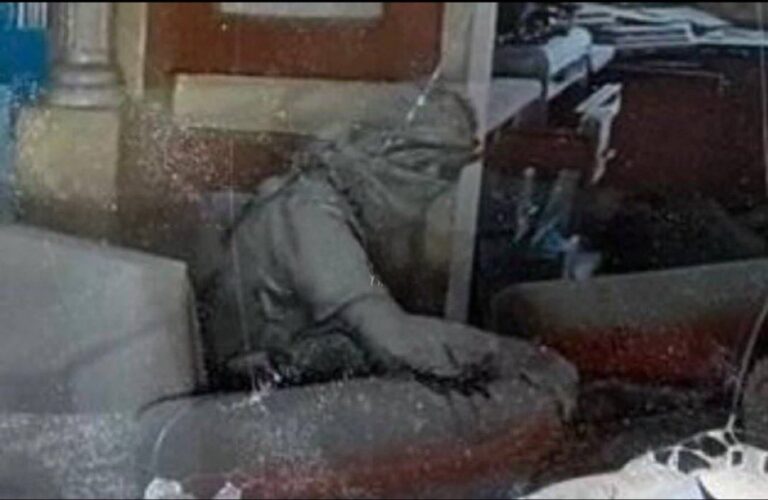
With time, those with open eyes come to recognize that life is peppered with strange, small ironies – “coincidences” that others don’t even notice, or unthinkingly dismiss.
The famous psychiatrist Carl Jung puzzled over such happenings, which he felt were evidence of some “acausal connecting principle” in the world. In a famous essay, he named the phenomenon “synchronicity.”
To those of us who believe in a Boreh Olam, synchronistic events, no matter how trivial they may seem, are subtle reminders that there is pattern in the universe, evidence of an ultimate plan.
My family has come to notice what appears to us to be an increase of such quirky happenings in our lives during the month (or, as this year, months) of Adar.
That would make sense, of course, since Adar is the month of Purim, so saturated with seemingly insignificant “twists of fate” that turn out to be fateful indeed. From Achashverosh’s execution of his queen to suit his advisor and later execution of his advisor to suit his new queen; to Mordechai’s happenstance overhearing and exposure of a plot that comes to play a pivotal role in Klal Yisroel’s salvation; to Haman’s visiting the king at the very moment when the monarch’s insomnia has him wondering how to honor Mordechai; to the gallows’ employment to hang its builder… The list of drolly fortuitous happenings goes on, and its upshot is what might be called The Purim Principle: Nothing is an Accident.
The holiday’s very name is taken from an act of chance – “purim,” after all, are the lots cast by Haman, who thinks he is accessing randomness but is in fact casting his own downfall. He rejoices at his lottery’s yield of the during which he will have the Jews destroyed: the month of Moshe Rabbeinu’s death. He does not realize that it was the month, too, of his birth.
The contemporary Adar coincidences I’ve come to expect are often about trivial things, but they still fill me with joy, as little cosmic “jokes” that remind me of the Eternal. One recent evening, for example, I remarked to my wife and daughter how annoying musical ringtones in public places are, especially when the cellphones are programmed, as they usually are, to assault innocent bystanders with jungle beats and rude shouting. “Why can’t they use the Moonlight Sonata?” I quipped.
The very next day at Mincha, someone’s cellphone went off during the quiet Shemoneh Esrei. Usually my concentration is disturbed by such things but this time the synchronicity of the sound only made me more aware of HaKodosh Baruch Hu. Never before had I heard a phone play the Moonlight Sonata.
Only days later, my daughter saw a license plate that intrigued her. It read: “Psalm 128.” What a strange legend for a car, she thought. That very night she accompanied her mother and me to a wedding. Under the chuppah, unexpectedly, a group of young men sang a lovely rendition of… yes, you guessed it.
Other times, the Adar coincidences are more obviously meaningful, clearly linked to Purim. A few Adars ago, a striking irony emerged from a new book about Joseph Stalin. It related something previously unknown: that after the infamous 1953 “Doctors Plot,” a fabricated collusion of doctors and Jews to kill top Communist leaders, the Soviet dictator had ordered the construction of four giant prison camps in Siberia, “apparently,” as a New York Times article about the book put it, “in preparation for a second great terror – this time directed at the millions of Soviet citizens of Jewish descent.”
Two weeks later, though, Stalin took suddenly ill at a dinner party and, four days later, it was announced that he had died. His successor Nikita Khrushchev recounted how the dictator had gotten thoroughly drunk at the dinner party, which ended in the early hours of March 1. Which, that year, was the 14th of Adar.
This year, too, I was synchronicity-struck by an unexpected piece of Adar information. It materialized as I did research for a speech I was to give about the destruction of a small Lithuanian town’s Jewish community during the Holocaust.
The most famous extant document about Nazi actions in Lithuania is what has come to be known as the Jager Report, after SS-Standartenfuehrer Karl Jager (whose surname, incidentally, means “hunter” in German; “as his name so was he”: he hunted Jews). Filed on December 1, 1941, and labeled “Secret Reich Business,” the report meticulously details a “complete list of executions carried out in the EK [Einsatzkommando] 3 area” that year.
It records the number of men, women and children murdered in each of dozens of towns and ends with the grand total of the operation’s victims – 137,346 – and the words: “Today I can confirm that our objective, to solve the Jewish problem for Lithuania, has been achieved by EK3…”
Standartenfuehrer Jager, however, only oversaw the operation; he didn’t get his hands dirty with the actual work of shooting Jews. That he left to a “raiding squad” of “8-10 reliable men from the Einsatzkommando,” led by a young Oberstumfuherer called Hamman. Joachim Hamman.
May his name, and that of his ancient namesake, be blotted out, and our days be transformed, in Megillas Esther’s words, “from sorrow to gladness and from mourning to festivity.”
© 2008 AM ECHAD RESOURCES
[Rabbi Shafran is director of public affairs for Agudath Israel of America.]











One Response
Nice article
It should be noted regarding the death of Stalin Yimach Shemo, that the Previous Rebbi of Karlin Stolin Reb Yochonon said that Purim (1953) “Mit dem simcha (from Purim) huben mir aim aveck g’patert” with the simcha that we had on Purim we put him (Stalin Y’S) away for good.
This story I heard from Reb Yiddel Ackerman (Lives in Bnei Brak, M’nahel Stolin Yeshiva) -, who was there.